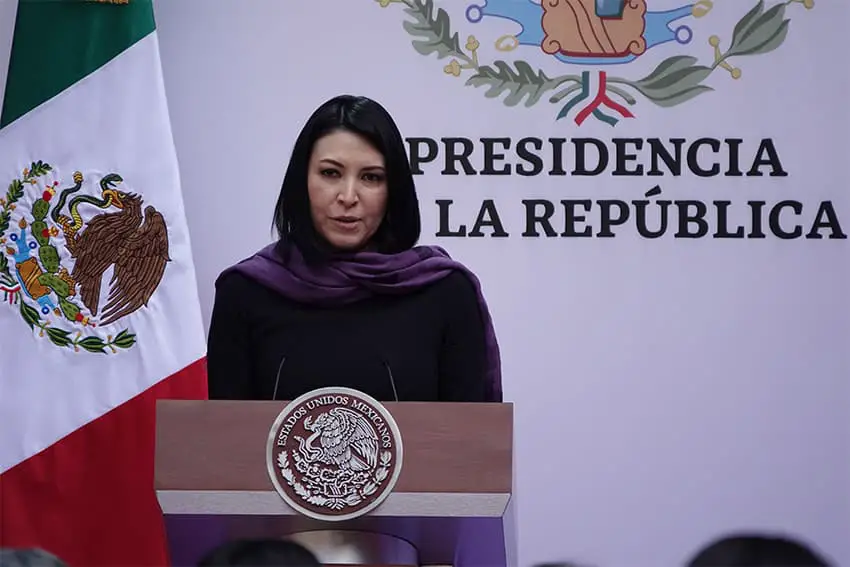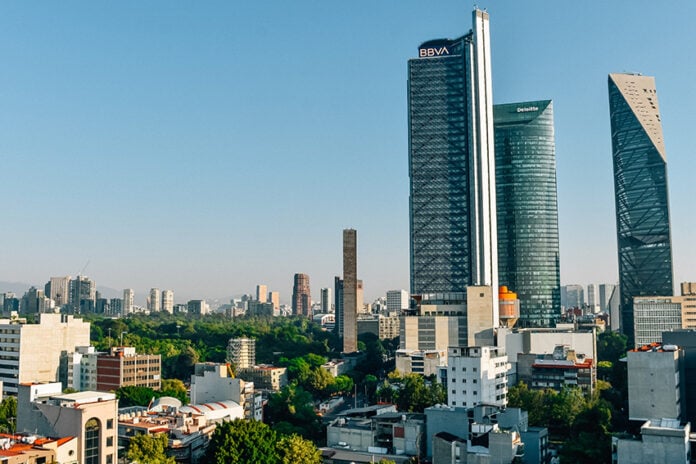The Bank of Mexico (Banxico) has cut its 2025 growth forecast for the Mexican economy from 0.6% to 0.3%, citing a third quarter contraction as the main reason for its revised prediction.
The central bank’s new forecast is included in its quarterly report for the July-September period. The bank’s forecast growth range is 0.1% to 0.5%, with 0.3% being the midpoint.
Banxico Governor Victoria Rodríguez Ceja presented the report on Wednesday, five days after the national statistics agency INEGI reported a 0.3% economic contraction in the third quarter of 2025 compared to the previous three-month period and a 0.2% annual decline.
“The contraction of economic activity in the third quarter of the year represented a weakness in the Mexican economy greater than previously anticipated,” she said.
“This leads to the GDP growth forecast for 2025 as a whole being adjusted from 0.6% in the previous [quarterly] report to 0.3% in the current one, Rodríguez said.
The 0.3% growth forecast for 2025 is slightly lower than the 0.4% annual GDP expansion recorded in the first nine months of the year. The growth rate in the first nine months of 2025 represented Mexico’s worst economic performance for the period since 2020, when the COVID pandemic and associated restrictions caused a sharp contraction.
En el tercer trimestre de 2025, y con cifras desestacionalizadas, el Producto Interno Bruto #PIB registró las siguientes variaciones:
⬇️-0.3% trimestral
⬇️-0.2% anualPor componente, las variaciones trimestrales fueron:
⬆️ 3.5% actividades primarias
⬇️-1.5% actividades… pic.twitter.com/r8q7bH266Y— INEGI INFORMA (@INEGI_INFORMA) November 21, 2025
Rodríguez noted that the Mexican economy’s performance this year has been adversely affected by a deterioration of the secondary sector as well as international uncertainty due to trade tensions. The secondary sector contracted 1.5% in the first nine months of the year, while the primary sector grew 2.9% and the tertiary sector expanded 1.2%.
Mexico’s export revenue — mainly derived from the shipment abroad of manufactured goods — has continued to grow this year, even as a range of Mexican products face tariffs when entering the United States.
A rosier outlook for 2026
Banxico predicts that the pace of growth of the Mexican economy will significantly quicken in 2026 compared to this year. The central bank’s forecast for next year is 1.1% growth, unchanged from the prediction in its second quarter report.
Banxico is forecasting that the Mexican economy will grow 2% in 2027.
Rodríguez noted that the central bank is anticipating “a faster pace of expansion” beyond 2025.
“We are of course assuming that the USMCA will remain in place, that the trade relationship with the United States and Canada will continue as it is now,” she said.

The three-way North American trade pact will undergo a formal review process in 2026, six years after it superseded NAFTA.
Mexico hopes that it will be able to negotiate even better trading conditions with the United States, whose government this year has imposed tariffs on a range of Mexican goods including steel, aluminum and heavy and light vehicles.
The conclusion of the USMCA review should generate more economic certainty in North America, including for companies that are considering investing in Mexico.
A greater influx of foreign direct investment (FDI) in Mexico as a result of a positive outcome of the review could help the Mexican economy grow more than expected in coming years. In the first nine months of 2025, FDI in Mexico reached a record high of just over US $40.9 billion.
In its quarterly report, Banxico cited a range of risks for growth of the Mexican economy over the forecast horizon, including an “intensification” of uncertainty related to U.S. trade policy and lower-than-expected growth of the U.S. economy.
Banxico’s forecasts for inflation and job creation
The Bank of Mexico predicts that Mexico’s annual headline inflation rate will be 3.5% at the end of the year, down slightly from a 3.61% reading in the first two weeks of November.
Banxico anticipates that inflation will moderate in 2026 to reach 3% in the third quarter of 2026, and remain at that level into 2027. The central bank targets 3% inflation, but tolerates a 2-4% range. It has cut interest rates after each of the last 11 monetary policy meetings of its board, reducing its key rate from 11.25% in early 2024 to 7.25% currently.
With regard to formal sector job growth, Banxico forecasts that between 210,000 and 310,000 additional positions will have been added in 2025 by the end of the year. That range includes digital platform workers, who this year became eligible for formal employment benefits thanks to the commencement of a six-month pilot program.
The Bank of Mexico is forecasting that an additional 260,000 to 460,000 formal sector positions will be added next year, and between 400,000 and 600,000 in 2027.
Mexico’s unemployment rate was 2.9% in the third quarter of 2025, but 55.4% of all people with jobs in that period were employed in the country’s vast informal sector.
With reports from El Economista, Reforma and El Financiero
